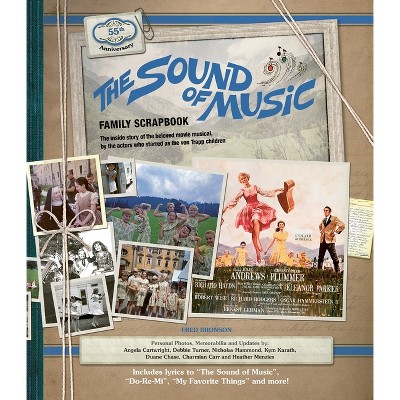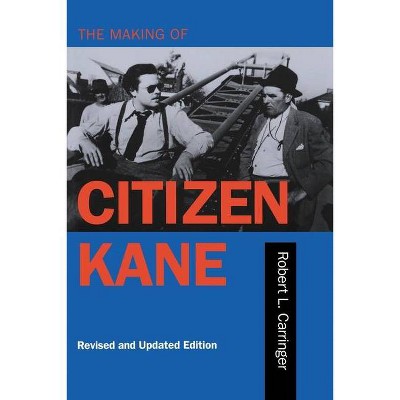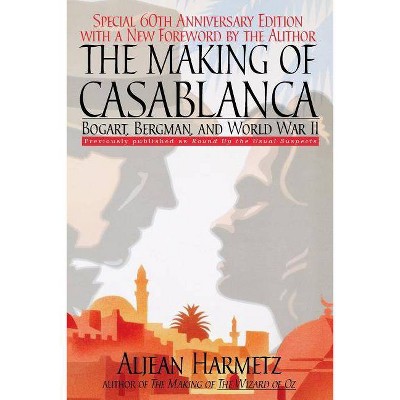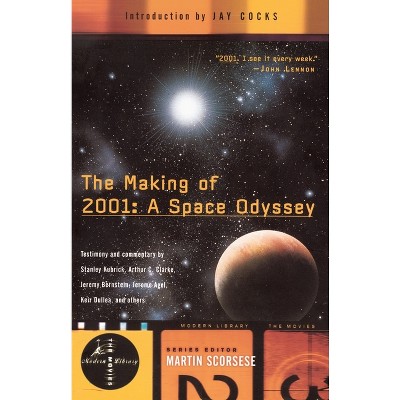Sponsored

Making the White Man's Indian - by Angela Aleiss (Paperback)
In Stock
Sponsored
About this item
Highlights
- The image in Hollywood movies of savage Indians attacking white settlers represents only one side of a very complicated picture.
- About the Author: Angela Aleiss is a contributing writer for such publications as the Los Angeles Times, Variety, and The Hollywood Reporter.
- 232 Pages
- Performing Arts, Film
Description
About the Book
The image in Hollywood movies of savage Indians attacking white settlers represents only one side of a very complicated picture. In fact sympathetic portrayals of Native Americans stood alongside those of hostile Indians in the silent films of D. W. Griffith and Cecil B. DeMille, and flourished during the early 1930s with Hollywood's cycle of pro-Indian adventures. Decades later, the stereotype became even more complicated, as films depicted the savagery of whites (The Searchers) in contrast to the more peaceful Indian (Broken Arrow). By 1990 the release of Dances with Wolves appeared to have recycled the romantic and savage portrayals embedded in early cinema. In this new study, author Angela Aleiss traces the history of Native Americans on the silver screen, and breaks new ground by drawing on primary sources such as studio correspondence, script treatments, trade newspapers, industry censorship files, and filmmakers' interviews to reveal how and why Hollywood created its Indian characters. Behind-the-scenes anecdotes of filmmakers and Native Americans, as well as rare archival photographs, supplement the discussion, which often shows a stark contrast between depiction and reality.
The book traces chronologically the development of the Native American's screen image while also examining many forgotten or lost Western films. Each chapter will feature black and white stills from the films discussed.
Book Synopsis
The image in Hollywood movies of savage Indians attacking white settlers represents only one side of a very complicated picture. In fact sympathetic portrayals of Native Americans stood alongside those of hostile Indians in the silent films of D. W. Griffith and Cecil B. DeMille, and flourished during the early 1930s with Hollywood's cycle of pro-Indian adventures. Decades later, the stereotype became even more complicated, as films depicted the savagery of whites (The Searchers) in contrast to the more peaceful Indian (Broken Arrow). By 1990 the release of Dances with Wolves appeared to have recycled the romantic and savage portrayals embedded in early cinema. In this new study, author Angela Aleiss traces the history of Native Americans on the silver screen, and breaks new ground by drawing on primary sources such as studio correspondence, script treatments, trade newspapers, industry censorship files, and filmmakers' interviews to reveal how and why Hollywood created its Indian characters. Behind-the-scenes anecdotes of filmmakers and Native Americans, as well as rare archival photographs, supplement the discussion, which often shows a stark contrast between depiction and reality.
The book traces chronologically the development of the Native American's screen image while also examining many forgotten or lost Western films. Each chapter will feature black and white stills from the films discussed.Review Quotes
"The literature includes dozens of books on the Hollywood Western, and perhaps a dozen just on the representation of Native Americans in Hollywood film....[t]he writing and research are scrupulous and engaging. Highly recommended. Lower-/upper-division undergraduates, graduate students, general readers." --Choice
"Making the White Man's Indian reminds us that films were made to make money and that they reflected whatever niche Indians occupied in the American attitude toward Indians and minorities at the time the films were made. Professor Aleiss explains why Hollywood representation of Indians has swung back and forth between the Indian-as-savage and the Indian-as-noble and sympathetic. Portraying Indians as people is not new....Hollywood may shape images but it responds in a cultural context. Her reviews of many obscure or forgotten films are a bonus....[b]elongs in the mainstream of current interpretations of Indian representations." --NDO North Dakota Quarterly "While Aleiss's book is a serious study, it is lively and very readable, full of little-known facts and anecdotes that add interest to its analysis....[M]aking the White Man's Indian is a useful addition for most libraries." --Multicultural Review "[D]raws on behind-the-scenes material such as correspondence, evolving scripts, studio publicity materials, reactions from film critics and Native American groups, and records of the self-censorship organization, to cast new light on the portrayal of Native Americans in US films." --Reference & Research Book News/Art Book News AnnualAbout the Author
Angela Aleiss is a contributing writer for such publications as the Los Angeles Times, Variety, and The Hollywood Reporter. She is a former postdoctoral fellow at the American Indian Studies Center at the University of California, Los Angeles, and a Fulbright Fellow at the University of Toronto.Shipping details
Return details
Trending Non-Fiction






Discover more options





